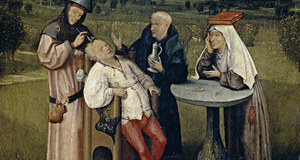Featured Article:The Evolution and Devolution of Mental Health Services in Australia
By
2017, Vol. 9 No. 10 | pg. 2/2 | « PsychologyAs in the United States, United Kingdom and several European countries, psychology in Australia has roots in the fields of education and philosophy unlike occupational therapy and social work, which evolved from nursing (Henderson & Walter 2009). This difference may account for psychology being viewed as somewhat different to other allied health disciplines within both general and mental health services (Henderson 2000). The birth of the psychology profession in Australia can be attributed to the establishment of three university chairs bearing the title, Mental Philosophy in the last decade of the 19th Century. Three scholars from Scotland were appointed to these chairs. Henry Laurie was appointed in 1890 in Melbourne, Francis Anderson in 1890 in Sydney and William Mitchell in 1894 in Adelaide. All three shared a similar educational background and approach. They drew inspiration from post-Darwinian functionalism, which was the driving force behind Galton’s experiments on perceptual and motor performance and human abilities. They also began to promote applied psychology. (Turtle 1985). In 1895, a group of academic scholars led by Anderson and Laurie began to promote psychophysical and psychometrical investigation in Australia. Thus they established the foundation for empirical psychology in Australia and the profession became associated with researching, quantifying and measuring behaviours and abilities. However, psychology was still viewed as an esoteric branch of philosophy. The recognition of scientific psychology, which was heavily steeped in behaviourism, was not widely accepted by the universities until 1913.John Smyth established the first experimental psychology laboratory in 1903 at the Melbourne Teachers College. In 1905 Alfred Binet and Theodore Simon, two French psychologists developed the Binet - Simon scale to assess intellectual ability. This heralded the start of standardised psychological testing. About the same time in 1906 Russian physiologist Ivan Pavlov published the first conditioning studies, the precursor to behaviourism (Turtle 1985). The establishment of undergraduate courses in psychology occurred between 1920 and 1930. In 1925, Sydney University offered the first major in psychology under the auspices of the Philosophy Department. Similarly, the University of Western Australia offered a major in psychology within the School of Education. However, it was not until 1929 that Sydney University appointed the first Professor of Psychology. In 1930 The University of Western Australia was the first university to offer a Bachelor of Arts (BA) in Psychology. Other universities followed rapidly and today psychology can be studied at 10 universities in New South Wales alone. The 1920s also marked the first government appointments of psychologists (Turtle 1985). Psychologists were mainly employed in the tertiary education sector. Those working outside academia were employed in vocational guidance or cognitive assessment of children with learning disabilities (White, Sheehan & Korboot 1983). The commencement of World War II triggered a rapid acceleration of applied psychology (Turtle 1985). The 1940s and 1950s provided opportunity for exponential growth and development in military and industrial psychology. Psychologists were involved in the assessment and treatment of military personnel. The success of psychology resulted in state governments expanding vocational and educational guidance, counselling and clinical services for children and adults and establishing industrial psychology facilities in both government and private organisations (Turtle 1985). During the 1960s, psychology like the other allied health professions, ventured into areas that expanded the profession’s scope of practice (Singh et al. 2001). Psychologists gained employment in inpatient mental health facilities and later in outpatient clinics and community health settings. They were employed primarily to conduct neurocognitive assessments, personality assessments, vocational and aptitude assessments, and to perform differential diagnoses (Meadows et al. 2002). Therapy consisted of developing behaviour management programs (i.e. behavioural therapy) with cognitive therapies added later. Today, psychologists employed in inpatient settings have primarily returned to an assessment and behavioural management role with little in the way of psychological therapies, which are delivered, by psychiatric nurses, occupational therapists and social workers depending on the staffing of the service (Larsen 2008). In summary, the development of the psychology profession in mental health services is distinct from that of social work and occupational therapy, which are deeply rooted in the nursing profession. Psychology owes its genesis to philosophy and education. The discipline grew out of a focus on assessment, learning and behavioural theories which contributed to and influenced the treatment of mental illness. Social WorkKathleen Woodrofe (1968) is credited with tracing the historical development of social work in the United States and in Britain. John Lawrence however published the first historical account of social work in Australia in the 1960s (Mendes 2005). The roots of the social work profession can be traced back to the 19th Century Industrial Revolution (Woodrofe 1968). The Industrial Revolution heralded widespread technological and scientific advancement as well as migration away from rural settings. An influx of people in urban areas led to a growth in social problems and an increase in social activism. Social activists fuelled by a forceful missionary push from various Protestant denominations tried to ameliorate difficulties arising from poverty, prostitution, disease and other afflictions (Woodrofe 1968). The first social workers were known as hospital almoners (from the word, alms, meaning charity) (Mendes 2005). Often they were drawn from the upper classes and known as lady almoners. They were the wives and daughters of the medical officers or the wealthy concerned with charity. Their positions at various medical institutions were voluntary. In 1895, The Royal Free Hospital appointed Mary Stewart as the first almoner. She was required to assess whether patients deserved free treatment. Over time, the role expanded to include provision of social programs. By 1905, other hospitals had established similar positions (Woodrofe 1968). Over in the USA, Jane Addams regarded as the founding matriarch of social work commenced the US Settlement House movement (Brown 1986). Between 1860 and 1935, rescue societies were formed. These societies assisted women working as prostitutes to find employment that is more suitable to support themselves. Asylums were also being built to take care of those with mental illness. In 1905, The Massachusetts General Hospital appointed the first professional social worker in the United States. Her name was Garnet Pelton and she was a nurse. From 1905 until 1918, most social workers appointed by general hospitals were nurses. The American Association of Hospital Social Workers (AAHSW) was established in 1918. The goal of this group was to formalise social work education and practice. Attempts to legitimise social work as a profession led first to the formation of many schools of social work and second to the formalisation of social work processes (Woodrofe 1968). By1929, ten universities offered courses in medical social work and social work began to compete with psychology and psychiatry as the complementary discourse to medicine in hospitals (Woodrofe 1968). The development of Social Work in Australia was based on the British and American models (Scott 2010). Social workers began to be appointed by hospitals in the 1920s but it was not until 1940 that Sydney University established the first social work degree. The curriculum borrowed heavily from established British and American schools (Woodrofe 1968). Agnes McIntyre was the first trained social worker in Australia. She had trained at St Thomas’ Hospital in London. McIntyre was appointed as hospital almoner by the Melbourne Hospital. She later became the inaugural Directress of the Victorian Institute of Hospital Almoners the organisation responsible for hospital almoner training and social education in Victoria (Lawrence 1965). Social workers began to be appointed in psychiatric hospitals in the 1950s (Woodrofe 1968). These early social workers were middle class, single women who viewed social work as a vocation rather than a profession (Lawrence 1976). Prior to that attendants and then nurses provided the role performed by social workers. Social workers in psychiatric hospitals were engaged in welfare work (Lawrence 1965). The development of antipsychotic medication saw their duties extend from the charitable to include the provision of accommodation, financial assistance, liaison with government agencies and the provision of psychotherapy. The development of the social work profession in mental health services, like occupational therapy, owes much to the nursing profession. Nurses advocating for the recognition of economic, social, family and psychological determinants of ill health led to the development of social work as a distinct profession. ConclusionBy tracing the development of the five largest professional groups employed in public sector mental health services it can be argued that some professional boundaries are more fixed and immutable while others are flexible and permeable (Corney 1999). Blurred boundaries between the professional groups seem to be most common in the delivery of psychosocial interventions and psychotherapies with each professional group borrowing heavily from the knowledge and interventions developed by the others. The establishment of generic positions has no doubt hastened this blurring of boundaries and extended scopes of practice between the professional groups in mental health services. It is not known what impact this has on the professional identity of these professional groups and on the delivery of appropriate care to consumers of public sector mental health services. This warrants further attention and exploration. ReferencesAdamson, LM 2011, 'Towards an understanding of occupational therapy professional practice knowledge in mental health services', Doctor of Philosophy thesis, Sydney University. AIHW 2012, Medicare-subsidised specialised mental health services, viewed 10 May 2013, <http://mhsa.aihw.gov.au/services/medicare/>. Anderson, B & Bell, J 1988, Occupational therapy: Its place in Australia's history, New South Wales Association of Occupational Therapists. Ban, TA 2006, 'The role of serendipity in drug discovery', Dialogues in clinical neuroscience, vol. 8, no. 3, p. 335. Barnes, M & Bowl, R 2001, Taking over the asylum: Empowerment and mental health, Palgrave. Bessant, B 1999, 'Milestones in Australian nursing', Collegian, vol. 6, no. 4, p. 3. Bircanin, I & Short, A 1995, Glimpses of the past: Mont Park, Arundel, Plenty. , The Authors, Melbourne. Bostock, J 1968, The Dawn of Australian Psychiatry: An Account of the Measures Taken for the Care of Mental Invalids from the Time of the First Fleet, 1788, to the Year 1850, Including a Survey of the Overseas Background and the Case Notes of Dr. F. Campbell, Australian Medical Association. Bronte, E 1847, Wuthering Heights, Penguin Books, New York. Brothers, CRD 1962, Early Victorian Psychiatry 1835-1905, Mental Hygiene Authority, Melbourne. Brown, S 1986, 'A woman's profession', in HW Marchant, B (ed.), Women in Social Work, Hale & Iremonger, Sydney, pp. 223-233. Burdekin, B, Hall, D & Guilfoyle, M 1993, Human rights and mental illness: Report of the national inquiry into the human rights of people with mental illness, Australian Government Publishing Service. Cade, JFJ 1979, Mending the mind: A short history of Twentieth Century psychiatry. , Sun Books, Melbourne. Christensen, E 1991, A proud heritage: The American occupational therapy association at seventy-five. , The American Occupational Therapy Association, Rockville, Maryland. Clark, L 1997, 'Joshua Bierer: Striving for power. ', History of Psychiatry, vol. 8, pp. 319-322. Coleborne, C 2003, 'Space, power and gender in the asylum in Victoria, 1850s – 1870s.’ in CCD MacKinnon (ed.), Madness in Australia: Histories, heritage and the asylum, University of Queensland Press, St Lucia, Queensland, pp. 49-60. Coleborne, C & MacKinnon, D 2006, 'Psychiatry and its institutions in Australia and New Zealand: An overview', International Review of Psychiatry, vol. 18, no. 4, pp. 371-380. Cooksey, E & Brown, P 1998, 'Spinning on its axes: DSM and the social construction of psychiatric diagnosis', International Journal of Health Services, vol. 28, no. 3, pp. 525-554. Corney, R 1999, 'Mental health services in primary care: the overlap in professional roles', Journal of Mental Health, vol.8, no.8, pp.187-194. Dax, EC 1989, 'The first 200 years of Australian psychiatry', Australian and New Zealand Journal of Psychiatry, vol. 23, no. 1, pp. 103-110. Dax, EC 1992, 'The evolution of community psychiatry', Australian and New Zealand Journal of Psychiatry, vol. 26, pp. 295-301. Digby, A 1985, Madness, morality and medicine: A study of the York Retreat, 1796-1914, Cambridge University Press Cambridge. Evans, JL 1966, 'Witchcraft, demonology and renaissance psychiatry', The Medical Journal of Australia, vol. 2, no. 1, pp. 34-39. Gilman, SL 1988, Disease and representation: Images of illness from madness to AIDS. , Cornell University Press, Ithaca, New York. Goodwin, V & Happell, B 2007, 'Psychiatric nurses enhancing consumer and caregiver participation in the state of Victoria the impact of history and policy', Policy, Politics, & Nursing Practice, vol. 8, no. 1, pp. 55-63. Happell, B 2007, 'Appreciating the importance of history: a brief historical overview of mental health, mental health nursing and education in Australia', The International Journal of Psychiatric Nursing Research, vol. 12, no. 2, pp. 1439-1445. Henderson, D & Walter, B 2009, 'Organising care for the mentally ill in Australia', in LRHK E. Willis (ed.), Understanding the Australian health care system, Churchill Livingstone Elsevier, Sydney. Henderson, S 2000, 'Focus on psychiatry in Australia', The British Journal of Psychiatry, vol. 176, no. 1, pp. 97-101. Ibell, BM 2004, 'An analysis of mental health care in Australia from a social justice and human rights perspective, with special reference to the influences of England and the United States of America: 1800-2004.', Doctor of Philosophy thesis, Australian Catholic University, Melbourne. Lawrence, RJ 1965, Professional social work in Australia, Australian National University, Canberra. Lewis, M 1988, Managing madness, Australian Government Publishing Service, Canberra. Meadows, G, Singh, B, Burgess, P & Bobevski, I 2002, 'Psychiatry and the need for mental health care in Australia: findings from the National Survey of Mental Health and Wellbeing', Australian and New Zealand Journal of Psychiatry, vol. 36, no. 2, pp. 210-216. Mendes, P 2005, 'The history of social work in Australia: A critical literature review', Australian Social Work, vol. 58, no. 2, pp. 121-131. Pardy, MGF 1937, 'For the mentally afflicted: Change of public mind urged: apathy and distaste should give way to sympathy and real help', Hospital Magazine, vol. 1, no. 7, pp. September, 28-30. Parkinson, J 1981, 'The Castle Hill lunatic asylum (1811-1826) and the origins of eclectic pragmatism in Australian psychiatry', Australasian Psychiatry, vol. 15, no. 4, pp. 319-322. Parry-Jones, WL 2013, The trade in lunacy: a study of private madhouses in England in the eighteenth and nineteenth centuries, Routledge. Parry Jones, W 1972, The trade in lunacy: A study of private madhouses in England during the 18th and 19th centuries, Routledge and Kegan Paul, London. Richmond, D 1981, 'Inquiry into health services for the psychiatrically ill and developmentally disabled', NSW Department of Health: Sydney. Roux, M 2013, Asylum, Harperteen, USA. Schwartz, KB 2003, 'The history of occupational therapy.', in ESC E. B. Crepeau, & B. A. Schell (ed.), Willard and Spackman’s occupational therapy (10th ed.), (pp. 5 – 13). Lippincott, Williams & Wilkins, Philadelphia. Scott, D 2010, 'Reflections on Social Work: Past, Present and Future', in 70th Anniversary Colloquium, Social Work at the University of Melbourne, University of Melbourne, Melbourne. Scull, AT 1979, Museums of madness: The social organization of insanity in nineteenth-century England, Allen Lane, London. Shorter, E 1997, A history of psychiatry: from the era of the asylum to the age of Prozac, John Wiley & Sons, New York. Silove, D 2002, 'The asylum debacle in Australia: a challenge for psychiatry', Australian and New Zealand Journal of Psychiatry, vol. 36, no. 3, pp. 290-296. Singh, B, Benson, A, Weir, W, Rosen, A & Ash, D 2001, 'History of Mental Health Services in Australia: the rise and fall of the institutions in Australia', in MGS B (ed.), Mental Health in Australia, Oxford University Press, South Melbourne. Stevens, JA & Crouch, M 1992, 'Working with the elderly: Do student nurses care for it?', Journal of Advanced Nursing, vol. 9, no. 3, pp. 12-17. Taft, R & Day, RH 1988, 'Psychology in Australia', Annual Review of Psychology, vol. 39, no. 1, pp. 375-400. Turtle, AM 1985, 'Psychology in the Australian Context', International Journal of Psychology, vol. 20, pp. 11-28. White, KD, Sheehan, PW & Korboot, PJ 1983, 'The Australian Journal of Psychology: The first 30 years', Australian Psychologist, vol. 18, pp. 261-272. Wilcock, AA 2001, History of occupational therapy, British College of Occupational Therapists, London. Woodrofe, K 1968, From charity to social work in England and the United States, Routledge & Kegan Paul, London. Suggested Reading from Inquiries Journal
Inquiries Journal provides undergraduate and graduate students around the world a platform for the wide dissemination of academic work over a range of core disciplines. Representing the work of students from hundreds of institutions around the globe, Inquiries Journal's large database of academic articles is completely free. Learn more | Blog | Submit Latest in History |


















